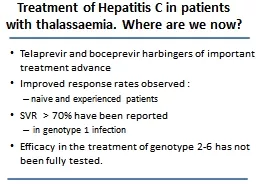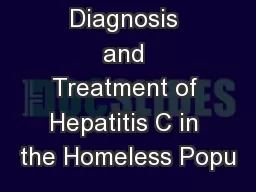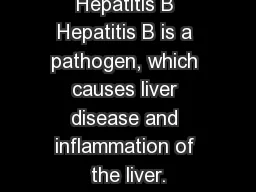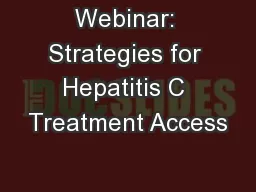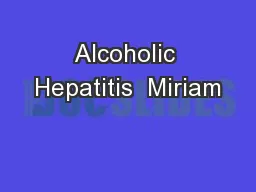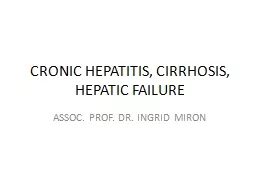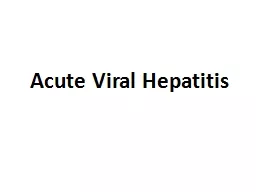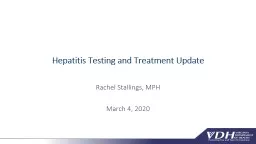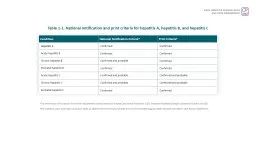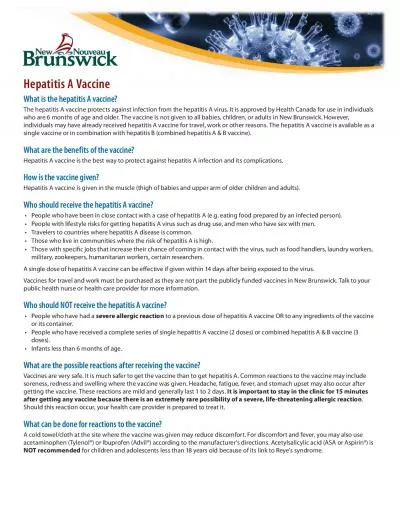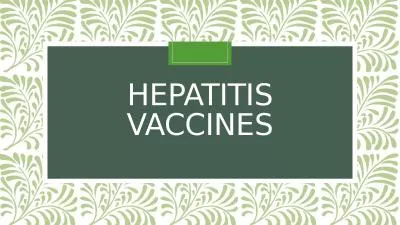PPT-Treatment of Hepatitis C in patients with
Author : tatyana-admore | Published Date : 2016-05-15
thalassaemia Where are we now Telaprevir and boceprevir harbingers of important treatment advance Improved response rates observed naive and experienced
Presentation Embed Code
Download Presentation
Download Presentation The PPT/PDF document "Treatment of Hepatitis C in patients wit..." is the property of its rightful owner. Permission is granted to download and print the materials on this website for personal, non-commercial use only, and to display it on your personal computer provided you do not modify the materials and that you retain all copyright notices contained in the materials. By downloading content from our website, you accept the terms of this agreement.
Treatment of Hepatitis C in patients with: Transcript
Download Rules Of Document
"Treatment of Hepatitis C in patients with"The content belongs to its owner. You may download and print it for personal use, without modification, and keep all copyright notices. By downloading, you agree to these terms.
Related Documents

